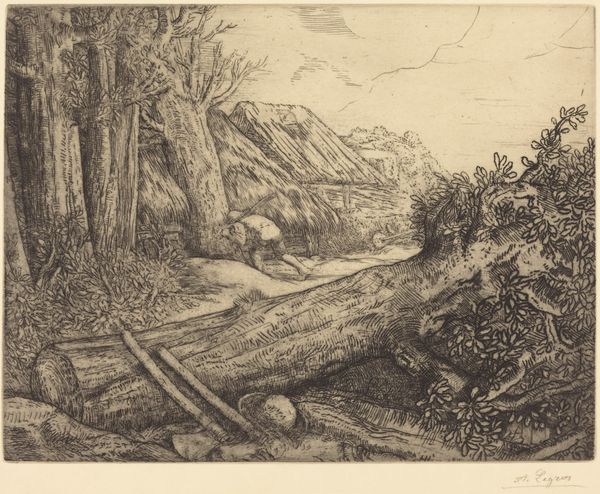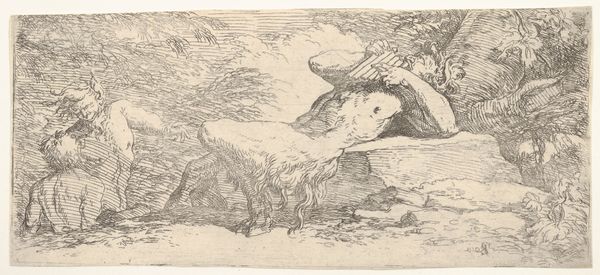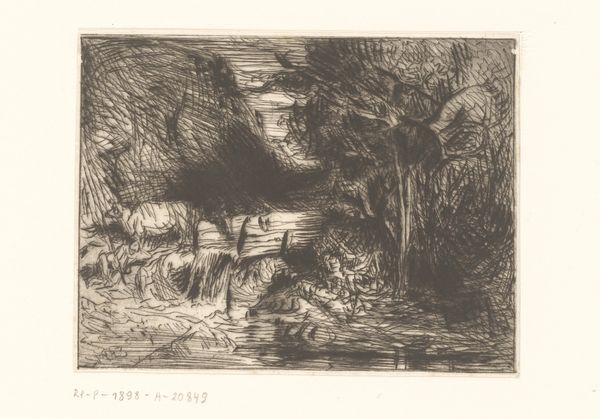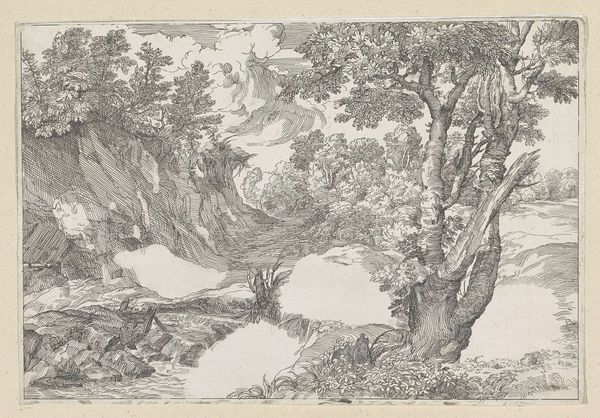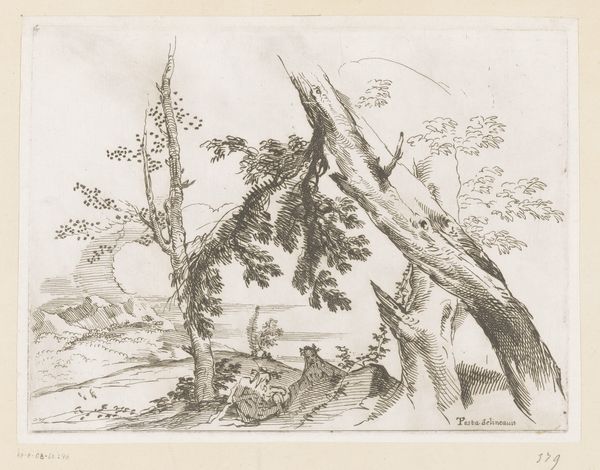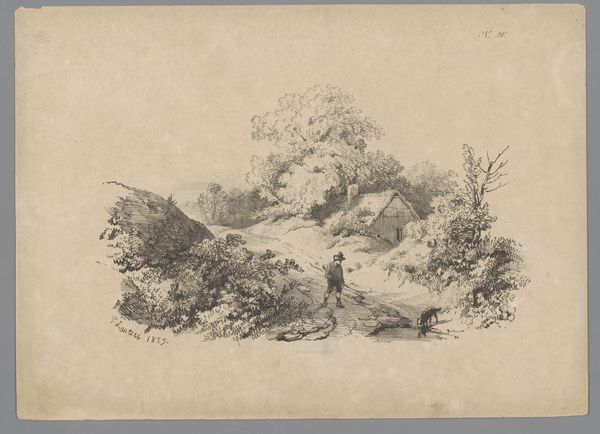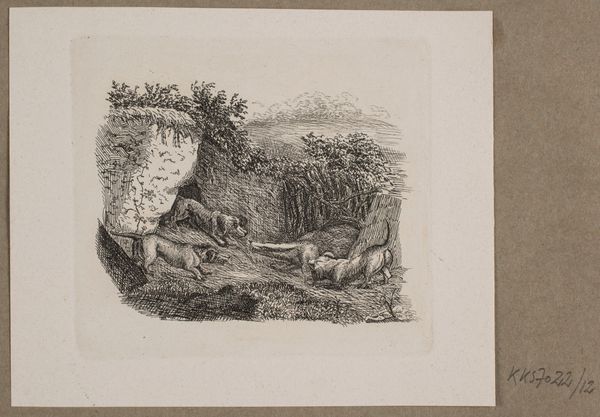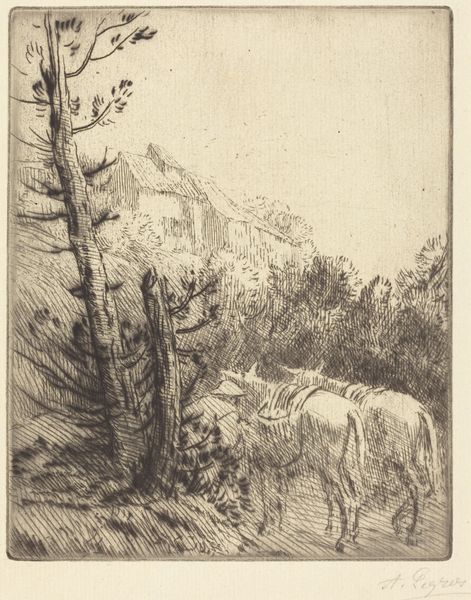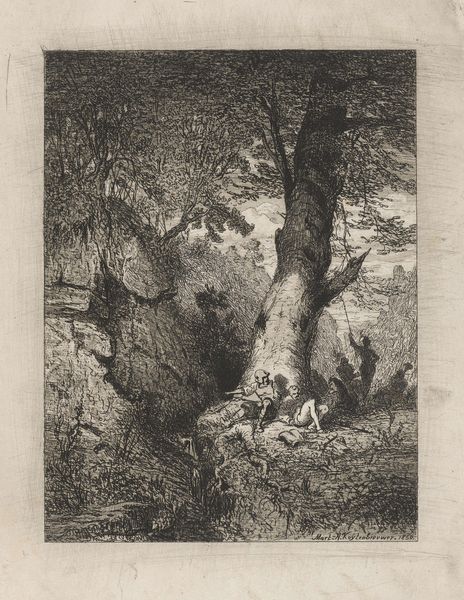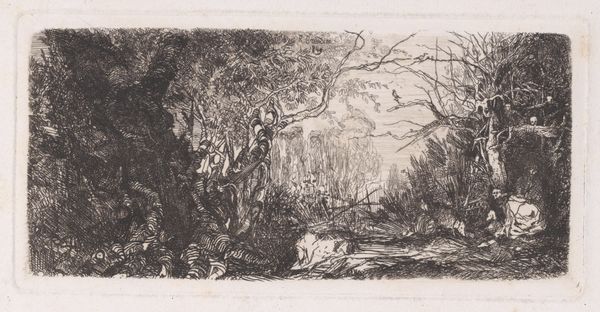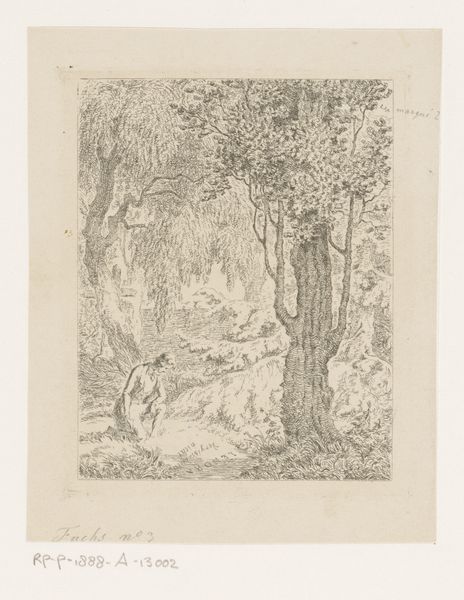
drawing, print, paper, ink, pen
#
drawing
# print
#
landscape
#
paper
#
ink
#
pen
#
realism
Dimensions: 193 × 263 mm
Copyright: Public Domain
Curator: Look at this captivating landscape. We're standing before Paul Huet's "Forest Pool with Heron," created around 1830. The artist used pen and brown ink on paper. Editor: It's instantly evocative. The texture! You can almost feel the dampness of the woods and the frantic energy of the heron catching its meal. I feel this frantic quality immediately through his bold use of hatching. Curator: Exactly! The hatching is key, demonstrating the techniques becoming popular at the time to translate plein air studies into portable works. The making of this drawing itself reflects this. Huet’s use of pen and ink allows him to render not just what he sees but how light filters through the trees and reflects on the water, but, too, considers how easily this can be done and carried off from the area as well as reproduced. It speaks to his awareness of audience and portability in artmaking. Editor: It is really compelling work! Also, as for that portability, the availability of paper, ink and pen around 1830 says something about an increase in material, production, and also about the availability of landscape subject matter to buyers during a rising Industrial revolution. It feels aligned to social attitudes emerging during that time period. Curator: An insightful connection! And the choice of a seemingly mundane scene, like a heron fishing, also participates in these evolving political dialogues concerning nature versus human impact during that period. These kinds of idyllic works also shaped the perception of how nature can offer a retreat from industrial modernity. Editor: It brings up questions about the marketing and construction of Romanticism through art. Also I'm thinking about the function of these materials and processes. Perhaps this was one of a number of similar studies which then ended up circulated as part of a limited edition set of landscape prints in a bound portfolio? What was the impact of works such as this upon a developing market economy that thrived upon these themes and subject matters? Curator: Interesting questions. This really gives insight into how drawings like these played a key role in both shaping and reflecting socio-cultural values of that period. Editor: Yes! Looking at Huet’s technique as a conscious selection and skillful labor makes me appreciate both its beauty and historical relevance. Curator: Agreed. Considering the social context helps understand how materials shape an artist's choices. Editor: Absolutely. Analyzing the piece, not only visually, but materially and historically is important in understanding this kind of landscape in nineteenth century artistic and consumer culture.
Comments
No comments
Be the first to comment and join the conversation on the ultimate creative platform.
